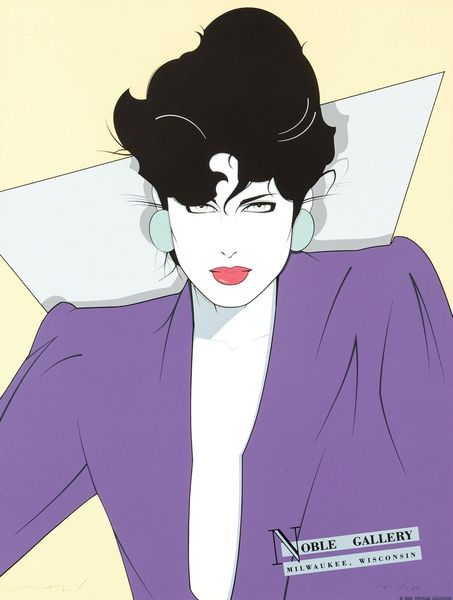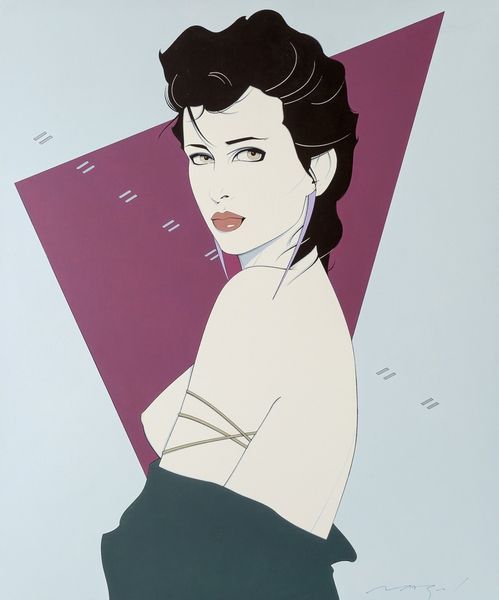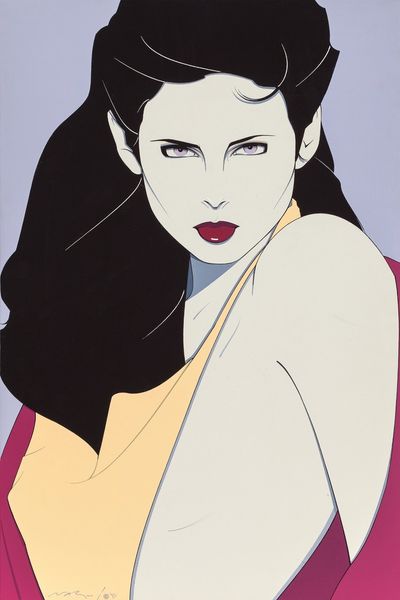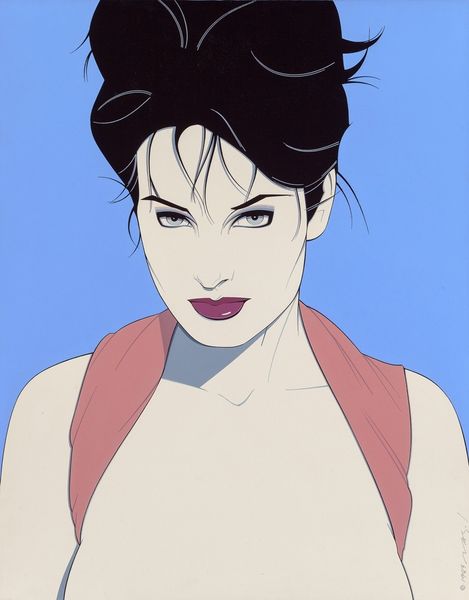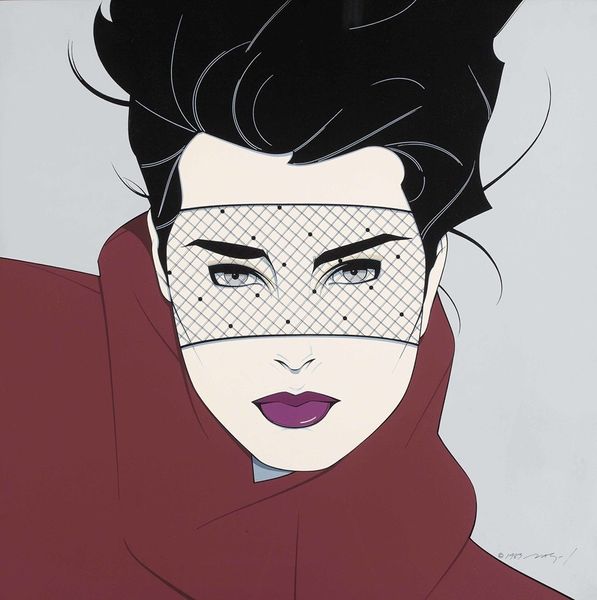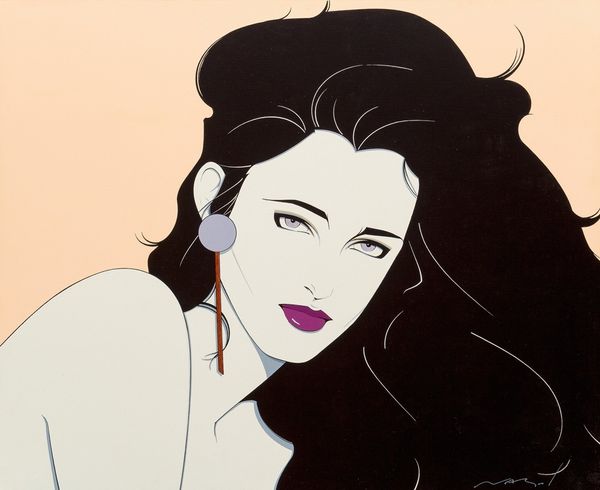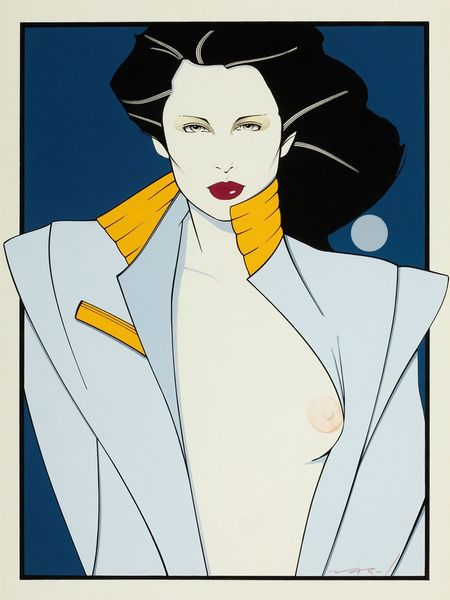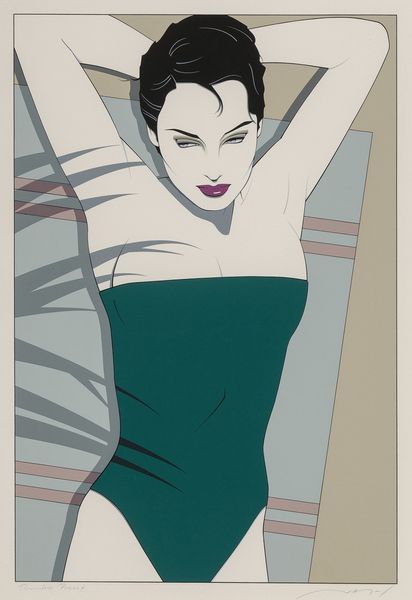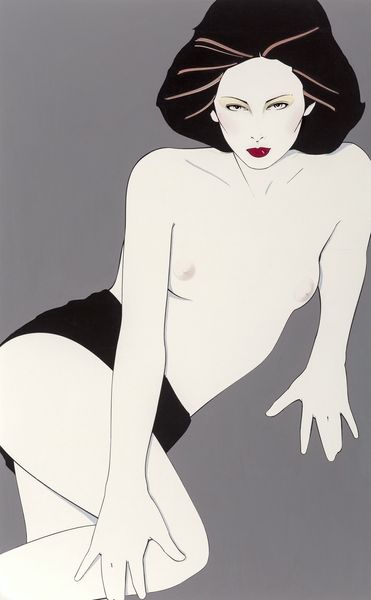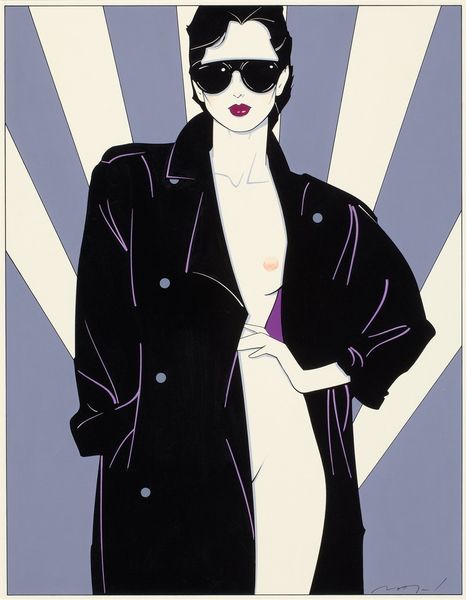
Copyright: Modern Artists: Artvee
Editor: So this is Patrick Nagel's "Joan Collins" from 1983, done in acrylic. It's such a striking image! The colors are so flat and graphic. What compositional elements jump out to you? Curator: The portrait is rendered through simplification. The planes of the face, neck and shoulders are reduced to clearly delineated forms. Note how Nagel employed flat, unmodulated color fields, devoid of brushstroke. This contrasts with traditional painting which models the figure using shading. What is the effect of these stylistic decisions? Editor: It feels very detached, almost like an image rather than a person. There's also this tension with her very voluminous hair contrasted to such sleek forms. Is there meaning there? Curator: Precisely. Nagel's aesthetic is rooted in a formal language of flatness. In semiotic terms, he has abstracted the real Joan Collins into an artifical sign, drawing focus to surface and the interplay of forms rather than any deeper representation of identity. What of the geometric shapes in the background? How do they function within this system of signs? Editor: They almost seem arbitrary, like graphic afterthoughts, but they really do reinforce the hard edges and two-dimensionality. Curator: They assert the picture plane itself. Nagel’s reduction of depth emphasizes the painted surface as a constructed space, pushing back against the illusionistic aims of representational art. Consider how line itself becomes an object, actively defining planes rather than simply outlining a shape. Editor: This makes me rethink the use of color too—it's not about naturalism, but about defining those flat shapes. Thanks, that really opened up my understanding. Curator: Indeed. It prompts us to reconsider how we perceive art and reality, constantly challenging the very principles of representation itself.
Comments
No comments
Be the first to comment and join the conversation on the ultimate creative platform.
